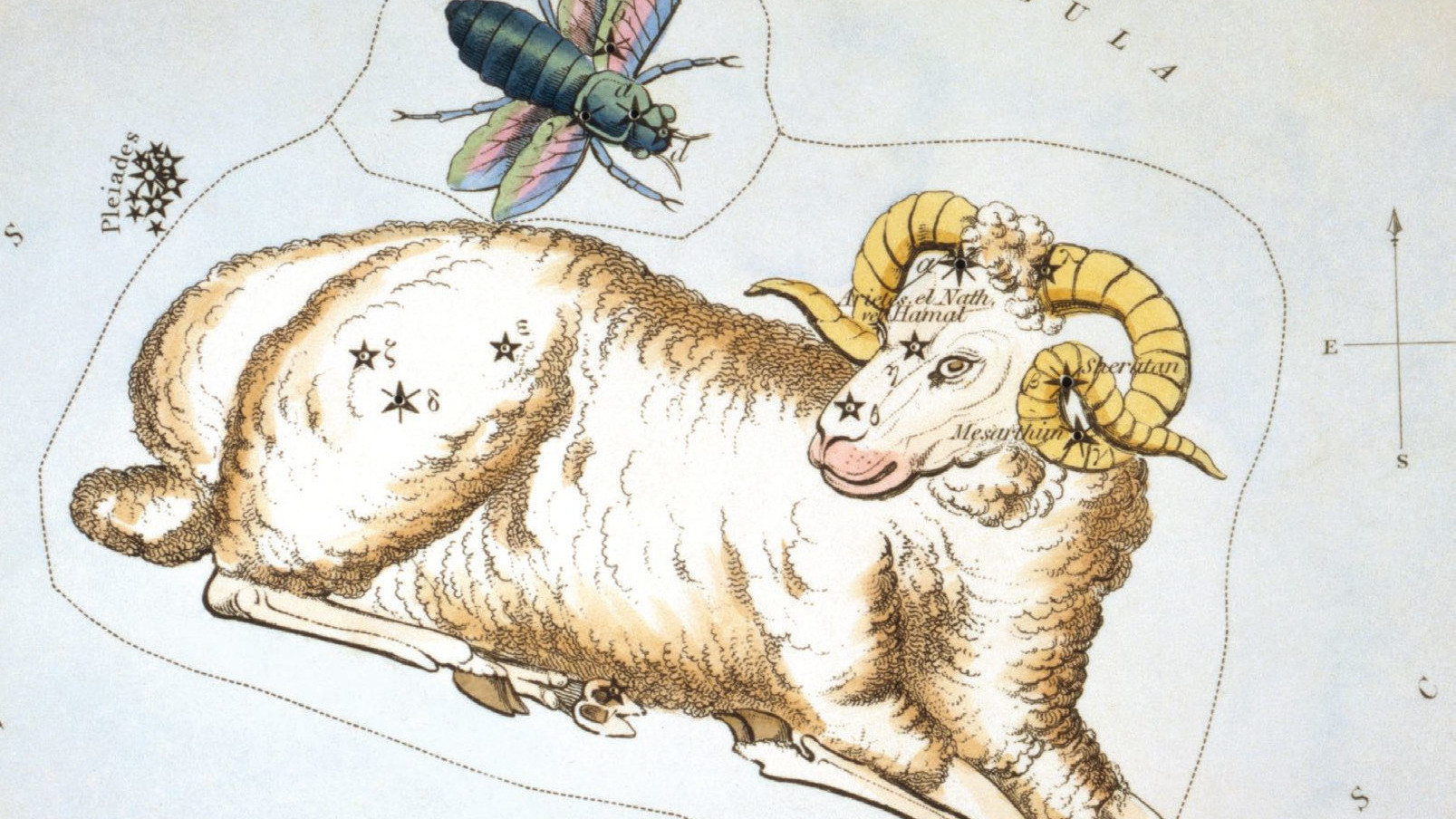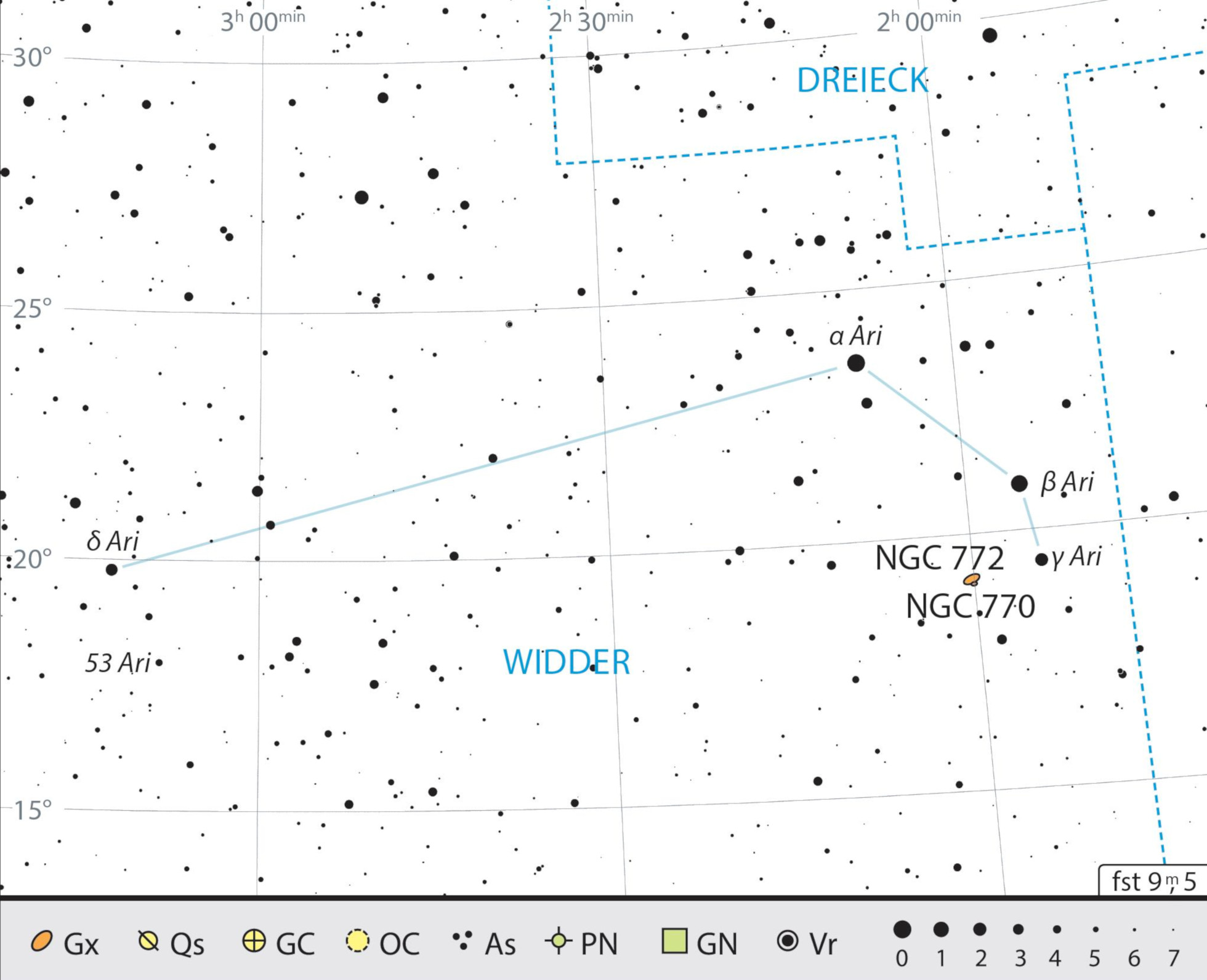Aries
Besides faint galaxies, Aries displays one of the first double stars discovered with a telescope. A classic for beginners!
 According to Greek mythology, the constellation represents a flying ram whose golden fleece was stolen by Jason and the Argonauts.
According to Greek mythology, the constellation represents a flying ram whose golden fleece was stolen by Jason and the Argonauts.Constellation Aries is small, but it is easy to spot in the autumn sky below Andromeda and Triangulum. The most prominent stars are α, β and γ Ari, which are supposed to represent the horned head of the animal. However, more than 3,000 years ago in Mesopotamia, the bright stars of Aries were seen as part of an agricultural worker who worked the field with a hoe. Later, the visualisation of the constellation changed to the present-day grazing animal and was assigned to Dumuzi, the Sumerian god of shepherds. Thus, the constellation also represents agriculture and livestock, a clear indication of the civilization that was developing at the time.
Jason and the Golden Fleece
The best-known story connected to the constellation has its origins in Greek mythology. Chrysomallos, the golden-fleeced ram, was sent by Hermes, the messenger of the gods, to bring Phrixus and Helle, the children of King Athamas, to safety from their evil stepmother. However, during the rescue operation, Helle fell from the flying animal and plunged into the sea. The fatal fall gave its name to Hellespont, the ancient name for a Turkish strait in the Mediterranean, which is known today as the Dardanelles. Her brother Phrixus, on the other hand, arrived safely in Colchis, where Aries commanded him to sacrifice him to the god of war. After that, the valuable ram pelt, the Golden Fleece, hung in a grove until it was stolen by Jason and his Argonauts.
Bright stars, faint galaxies
The scientist Robert Hooke was at home both in the microscopic and macroscopic worlds. In 1665 his main work Micrographia appeared, in which he also introduced the term "cell". It was Hooke who discovered the binary nature of the star γ Ari – while observing a comet, he noticed that his telescope could resolve the distant sun into two equally bright points of light. γ Ari is actually one of the first binary stars discovered with a telescope, and can be observed with a beginner telescope.
53 Ari is another interesting star system. Since 1961 it has been assumed that, together with two other stars, it originated in the Orion Nebula. Perhaps, a supernova explosion around four to five million years ago expelled 53 Ari out of the nebula from which it originated, which is known today as the Orion Nebula.
Bright deep sky objects are unfortunately rare with this constellation. While the neighbouring constellations Andromeda and Triangle entice with their imposing galaxies, Aries is not usually the first choice for a night spent observing galaxies in autumn. We recommend a telescope with a medium-sized aperture to properly observe these faint galaxies and – as is the rule for all deep sky observations – dark skies. NGC772, the brightest galaxy in the constellation, forms an interactive pair with the compact dwarf galaxy NGC770. Starting from γ Ari, this pair of galaxies is easy to find. Another pair consists of NGC680 and NGC678.
 Outline map of constellation Aries with our observing recommendations.
Outline map of constellation Aries with our observing recommendations.Author: Nico Schmidt / Licence: Oculum-Verlag GmbH
